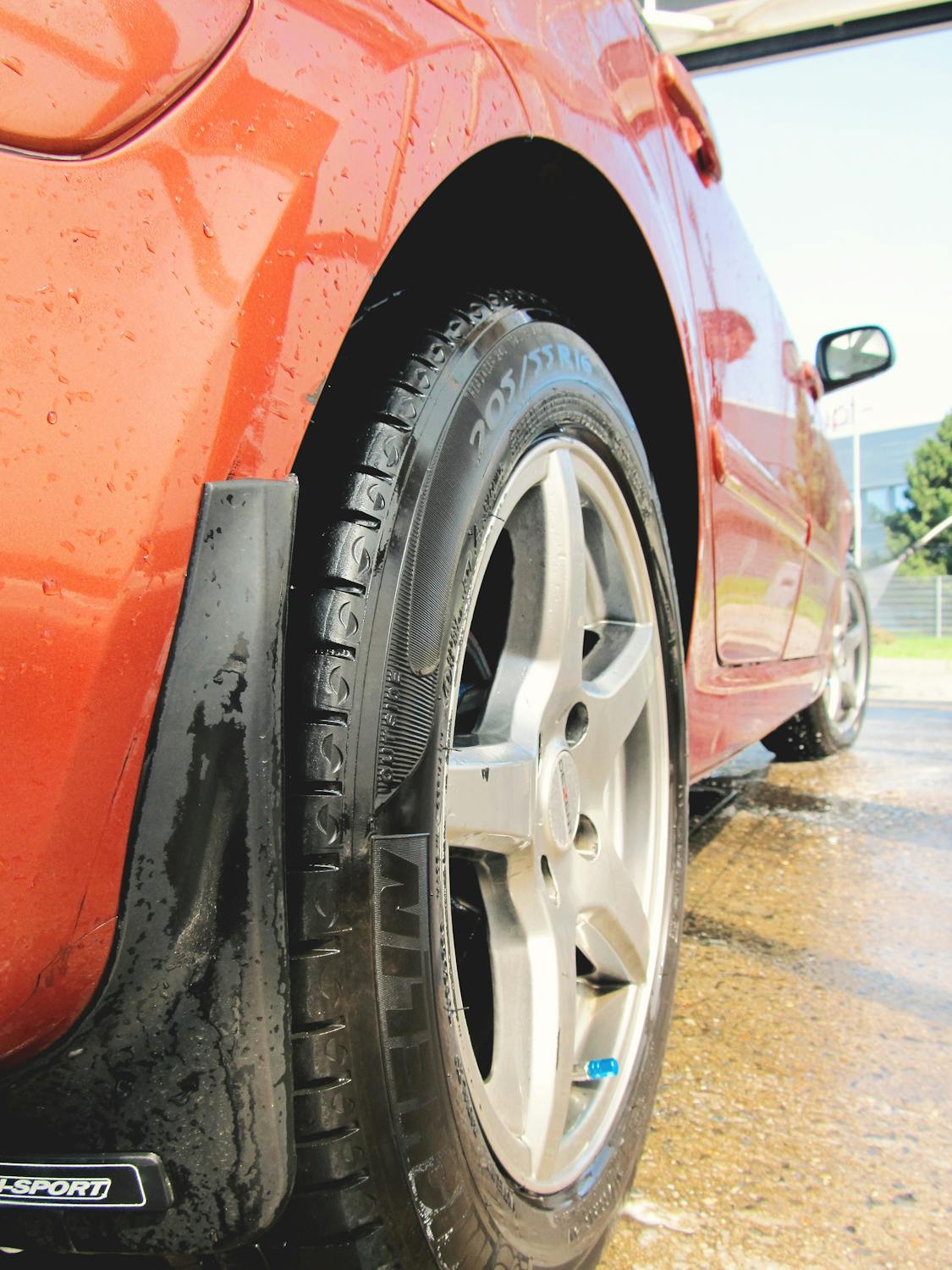Tire defects are a major cause of road accidents, often resulting in serious injuries or fatalities. Common issues include tread separation, sidewall failures, and manufacturing defects. Knowing about these problems can help stop accidents and make sure tires are taken care of properly.
The National Highway Traffic Safety Administration even reports that there are thousands of accidents each year caused by tire issues, which shows just how important it is to stay alert while driving. Understanding your legal rights and seeking compensation for injuries related to tire defects can help prevent accidents and save lives.
Contact the tire defect attorneys at Regan Zambri Long for a free case evaluation.
Contact Us Today to Schedule
A Free Consultation
Tire defects can lead to catastrophic accidents that can lead to serious long-term implications. The most common types of tire defects that cause accidents include tread separation, sidewall failures, and manufacturing defects.
According to the National Highway Traffic Safety Administration (NHTSA), tires are instrumental in ensuring road safety, given that U.S. drivers put over 2,969 billion miles on them annually. Nearly 11,000 tire-related crashes occur, resulting in almost 200 deaths. Proper tire maintenance, understanding tire labels, and paying attention to recalls and complaints can help prevent these types of crashes.
If you’ve experienced injuries due to a tire-related accident, don’t hesitate to contact Regan Zambri Long for a free case evaluation. We can help you seek justice and compensation for your injuries.
Identifying dangerous tire defects before they lead to accidents will help ensure your safety. Look for warning signs of potential tire failure, such as visible bulges, cracks, or punctures in the tire’s sidewall or tread. Experiencing unusual vibrations while driving, difficulty steering, or a noticeable loss of tire pressure can also point to an issue.
Keeping up with regular tire inspections and maintenance is the key to preventing tire-related accidents. Check your tires monthly for signs of wear or damage, including the tread depth. Ensure your tires are properly inflated by using a tire pressure gauge — and rotate them regularly to ensure even wear.
Also, inspect for any objects stuck in the tread that could cause damage over time. If your tires are more than six years old, consider replacing them — even if they appear fine — because rubber degrades over time.
For those who have suffered from a tire defect, documenting everything will help build your case. Keep records of any inspections, maintenance, or repairs. If possible, preserve the defective tire as evidence and take photos of any visible damage. Our experienced attorneys can help determine if a tire defect was to blame. Schedule your consultation today to protect your rights.

Manufacturers are responsible for producing safe and reliable products — and that includes tires. When a tire defect occurs due to poor design, manufacturing errors, or inadequate testing, the manufacturer can be held liable for any resulting injuries or accidents caused by the defect. This responsibility includes ensuring that tires meet safety standards and perform as expected under normal driving conditions.
Recent tire recalls highlight the ongoing issue of defective tires. In fact, a company that sells replacement winter tires is recalling more than 541,000 of them in the U.S. because they don’t have enough snow traction to meet North American standards. Major recalls have occurred due to issues like tread separation, sidewall failures, and tread wear concerns.
Tire companies have faced recalls due to defects causing deadly accidents. Firestone recalled over 6.5 million tires due to tread separation, causing over 200 deaths and thousands of injuries. Michelin also issued a recall for over 1.3 million tires, causing premature tread wear and increased risk of tire blowouts and accidents.
Bridgestone joined the list when it recalled several thousand tires due to defects causing tread separation or sidewall damage, resulting in fatalities and serious injuries. These recalls highlight the dangers of defective tires and the responsibility of tire manufacturers to ensure safety.
However, there are specific time limitations when filing a tire defect claim. In DC, you have three years from the date of the accident to file a claim. Missing this deadline could prevent you from seeking compensation.
Don’t let tire manufacturers avoid responsibility for their defective products. If you’ve been injured in an accident caused by a faulty tire, contact us today to protect your rights and pursue justice.
When pursuing a tire defect lawsuit, evidence collection and preservation are critical. Immediately after the accident, secure the defective tire, as it can serve as key evidence in your case. Take clear photos of the damage and preserve any related materials, such as maintenance records and tire purchase receipts. If possible, get witness statements from those who observed the accident.
An essential component of a successful tire defect case is the use of expert witnesses. Tire experts can analyze the defect, determine the cause, and testify about how the manufacturer’s negligence contributed to the accident. Expert witnesses can also assess the tire’s design, materials, and manufacturing process to provide a thorough understanding of the defect.
Victims of tire defects may be entitled to various types of compensation. This includes medical expenses, lost wages, pain and suffering, emotional distress, and, in some cases, punitive damages if the manufacturer’s actions were grossly negligent.
At Regan Zambri Long, we understand the complexities of tire defect cases. Our experienced product liability team will help you gather the necessary evidence, consult with experts, and build a compelling case. Reach out now to ensure your rights are protected and secure the compensation you deserve.
When a tire fails, the consequences can be severe. Here are the most common types of injuries that can occur from defective tires:
Injuries from Loss of Vehicle Control:
Injuries from Sudden Tire Blowouts:
Common tire defects that can cause these injuries include:
The severity of injuries often depends on:
It’s worth noting that even experienced drivers can struggle to maintain control when a tire fails at highway speeds, which is why proper tire manufacturing and testing is so important for public safety.

The National Highway Traffic Safety Administration (NHTSA) sets strict regulations for tire safety to ensure the protection of motorists. These NHTSA regulations require tire manufacturers to meet specific performance, durability, and safety standards before their products can be sold. Key requirements include tread wear, heat resistance, and the proper labeling of tire information.
If you believe a tire violates these standards, you can report it to the NHTSA through their online portal or by contacting the manufacturer directly. This allows for investigations, recalls, and increased consumer safety.
Violations of federal tire safety standards can significantly impact lawsuits, as manufacturers may be held liable for not adhering to required safety protocols. If a tire defect is traced to non-compliance with these standards, it strengthens a victim’s case, increasing the likelihood of receiving compensation for injuries and damages.
Our attorneys understand complex federal regulations and have extensive experience handling tire defect cases. We are committed to helping you throughout the legal process and secure the compensation you deserve. Contact us today to evaluate your tire defect claim and ensure your rights are protected throughout every step of the case.